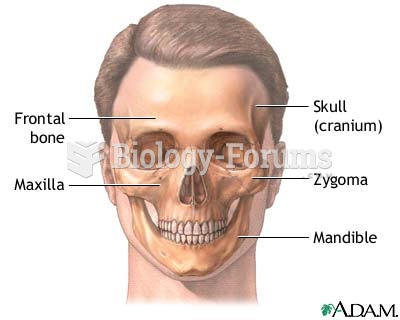|
|
|
Did you know?
Fewer than 10% of babies are born on their exact due dates, 50% are born within 1 week of the due date, and 90% are born within 2 weeks of the date.
Did you know?
The longest a person has survived after a heart transplant is 24 years.
Did you know?
In 1864, the first barbiturate (barbituric acid) was synthesized.
Did you know?
The Babylonians wrote numbers in a system that used 60 as the base value rather than the number 10. They did not have a symbol for "zero."
Did you know?
Most childhood vaccines are 90–99% effective in preventing disease. Side effects are rarely serious.







